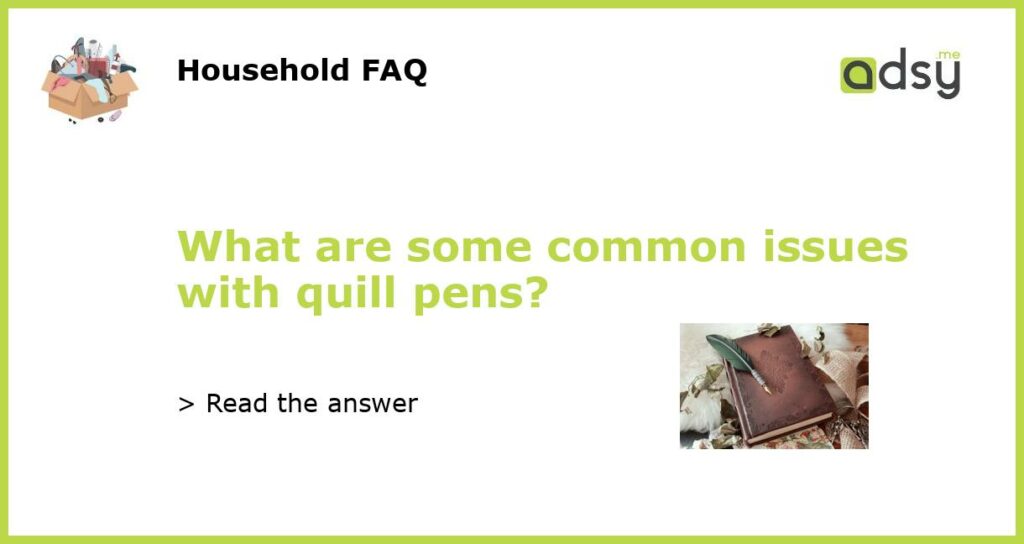Lack of Durability
Quill pens are not known for their durability. The quill, which is made from the feather of a bird, is delicate and can easily break or wear out with extensive use. This means that quill pens need to be replaced regularly, which can be time-consuming and costly.
Additionally, the ink used with quill pens can cause the feather to deteriorate over time. The corrosive properties of ink can eat away at the quill, causing it to become weak and frail. This makes quill pens even more prone to damage and breakage.
Messy Ink Spills
One of the most common issues with quill pens is the messy ink spills they can create. Since quill pens rely on a well of ink, it’s easy for the ink to spill if the pen is not held upright or if too much pressure is applied. This can lead to smudged and blotchy writing, ruining the aesthetics of the document.
Furthermore, quill pens often require a separate inkwell or ink pot, which can be prone to tipping over and causing even more spills. This can be particularly problematic when writing on valuable or important documents.
Difficulty Controlling Ink Flow
Another issue with quill pens is the difficulty in controlling the flow of ink. The flexibility of the quill can make it challenging to maintain a consistent ink flow, resulting in uneven and messy writing.
The pressure applied while writing with a quill pen can also impact the amount of ink that is released onto the page. Too little pressure can result in faint and hard-to-read writing, while too much pressure can cause excessive ink flow and smudging.
Limited Ink Capacity
Quill pens have a limited ink capacity due to their design. The hollow shaft of the feather can only hold a small amount of ink at a time, requiring frequent dips into the inkwell. This constant need for refill can be time-consuming and interrupt the writing flow.
In addition, the small ink capacity of quill pens means they are not suitable for long writing sessions or tasks that require continuous writing without pause. This can be frustrating for writers who need to work for extended periods of time without interruptions.
Incompatibility with Modern Writing Surfaces
Quill pens were traditionally used on parchment or vellum, which are smooth and absorbent surfaces. However, they may not perform as well on modern writing surfaces, such as regular paper or glossy paper.
The rough texture of regular paper can cause the quill to catch and snag, resulting in uneven lines and potential damage to the pen. Glossy paper, on the other hand, does not absorb the ink as well, leading to slower drying times and increased smudging.
Overall, using quill pens on modern writing surfaces requires extra care and attention to prevent issues with the quality of writing and potential damage to the pen.






